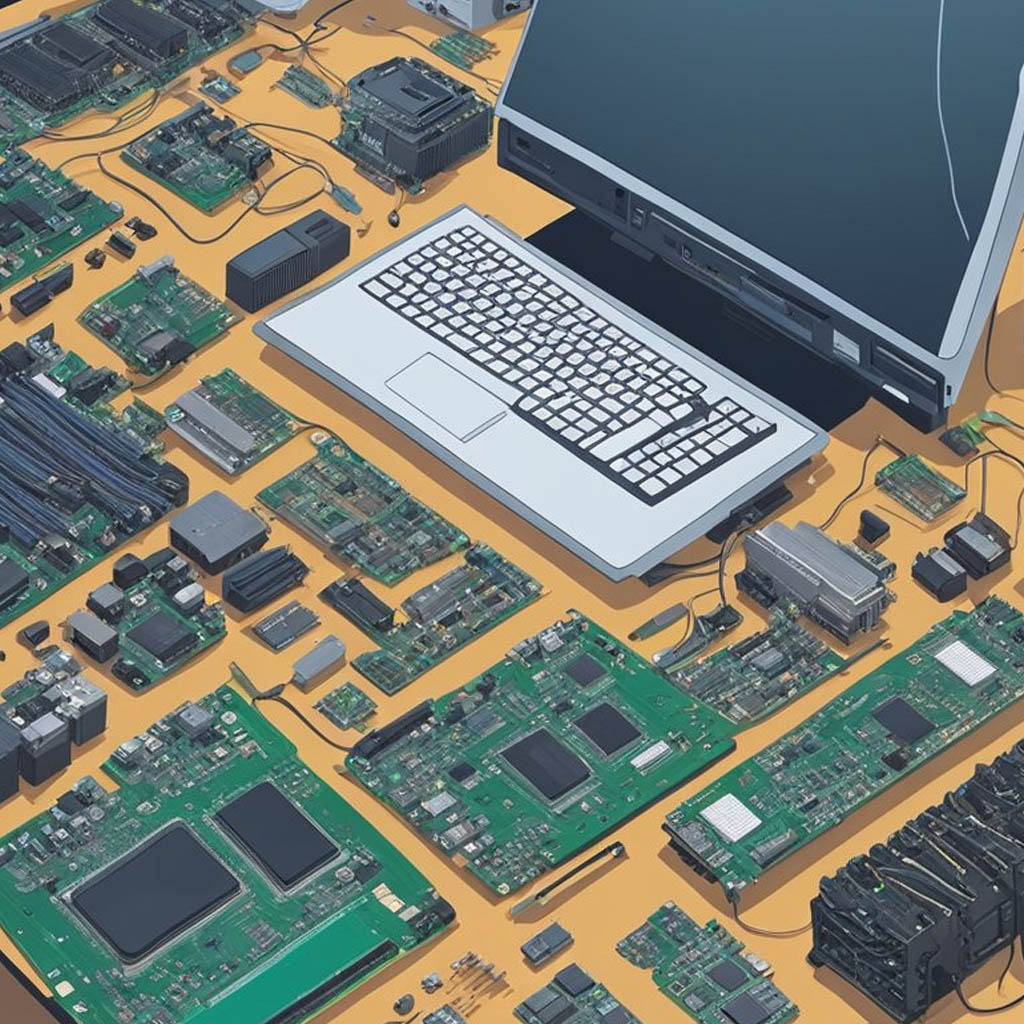Assessing the Damage and Potential for Repair
To determine what to do with a broken laptop, we need to examine its condition and see if repair is possible. We can evaluate its functionality, explore repair options, and consider salvaging usable parts.
Evaluation of Laptop Functionality
First, we need to check if the laptop turns on. If it doesn’t, we can look for signs of life like lights or sounds. If it starts but has problems, we can note them. Common issues include:
- Screen Damage: Cracks or black screens.
- Battery Issues: The laptop won’t hold a charge.
- Keyboard Malfunctions: Keys not working.
Next, we should run basic tests like checking the keyboard, trackpad, and ports. If the laptop is significantly damaged, it might not be cost-effective to repair. Knowing the model can help us find parts easily. This way, we can decide whether to fix it or look for alternatives.
Options for Computer Repair
If the laptop has potential, we can explore repair options. We can either do it ourselves or hire a professional. DIY repairs can be cost-effective but require some skills.
For example, we may replace:
- Batteries: A new battery can bring old laptops back to life.
- Screens: Replacing a cracked screen can restore functionality.
- Hard Drives: Upgrading to an SSD can enhance performance.
If we’re not comfortable with repairs, local computer repair shops or online services can help. Before choosing, we should compare costs and reviews. Getting a quote can give us a clear idea of what to expect.
Salvaging Usable Parts
If repair isn’t feasible, we can salvage parts from the broken laptop. Many components can be reused or sold. Some valuable parts include:
- RAM: This can often be used in other laptops.
- Hard Drives: Functional drives can be useful for storage.
- Laptop Speakers: They may still work well and find new use.
Before we toss a laptop, we should assess all parts. Even damaged laptops can yield useful components. We can recycle or donate parts that we don’t need. This way, we reduce waste and may even help others.
Selling, Donating, and Recycling Strategies
We have several effective options for broken laptops. By selling, donating, or recycling, we can find the best new home for these devices, reducing waste while getting some value back or helping others.
How to Sell a Broken Laptop
We can sell broken laptops through various platforms. Websites like eBay and Craigslist make it easy to post listings. Be clear about the laptop’s condition and any parts that still work.
Tips for Selling:
- Take clear pictures showing the laptop’s exterior and any damage.
- Set a reasonable price based on its condition.
- Consider local selling on Facebook Marketplace for quicker sales.
Some retailers, like Best Buy, offer trade-in programs. We can receive store credit even if the laptop is not fully functional.
Donation Opportunities for Old Laptops
If selling is not our choice, donating is a good option. Organizations like Digitunity and World Computer Exchange accept old laptops. They refurbish them and give them to people in need.
Steps to Donate:
- Check the organization’s criteria for donations.
- Wipe all personal data from the laptop.
- Package the laptop securely for drop-off or shipping.
Many local schools and non-profits appreciate usable devices. Donating helps others and reduces e-waste.
Proper Electronics Recycling Practices
When laptops are beyond repair, recycling is the responsible choice. E-waste can be harmful to the environment if not disposed of correctly.
Recycling Steps:
- Locate an electronics recycling facility in our area.
- Check if local stores have recycling drop-off events.
- Use manufacturer take-back programs if available.
This way, we ensure the laptop is disposed of safely and responsibly. It keeps harmful materials out of landfills and supports a sustainable environment.
I’m Cartez Augustus, a content creator based in Houston, Texas. Recently, I’ve been delving into different content marketing niches to achieve significant website growth. I enjoy experimenting with AI, SEO, and PPC. Creating content has been an exciting journey, enabling me to connect with individuals who possess a wealth of knowledge in these fields.

